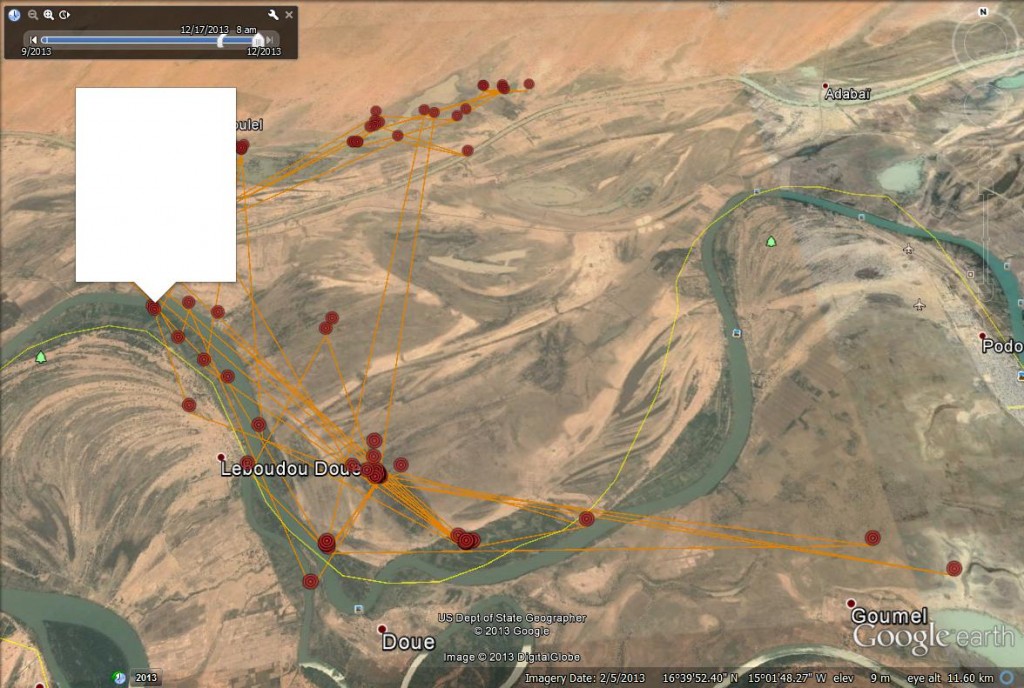Osprey Udpate 17th Dec
Still no news alas of our young osprey Blue YZ who was least heard from in Guinea Bissau a month ago. We are no longer holding out any hope of her transmitter restarting and have only distant hopes that she has survived.
I have been asked about her altitude before her disappearance and whether or not it gave any clues as to her behaviour or health. Checking the raw data again, I can see that on the day we lost track of her, her heights were all 10- 2ometers , which would mean she was on trees or bushes etc. At each of these hourly points she was stationary- her last recorded decent flight was on the previous morning. This may all be consistent with a poorly bird slowing down and doing just very short flights from tree to tree.
On a brighter note, Blue YD the 2012 osprey chick , is still doing his usual thing in Senegal. here is a map of this movements over the last 10 days. The box shows his location at 8am this morning!

He has been alternating his time fishing between the main river channels and various lagoons . We have been speculating that this may be because as the dry season progresses, these temporary lagoon water bodies are starting to dry out making fish gather in small pools as easy pickings. For example he has gone on a couple of trips to the east- on the 13th of December , he left this normal roost at 7am and fly five miles into the arid surrounds to near the village of Goumel with its lagoons.
Just one osprey question today:
Q: If Lady does come back but fails to produce eggs, or no eggs hatch, would she leave the nest then? What would happen to her then? What will happen to the nest?
A: We do not know if our famous resident female osprey will make it back again to Loch of the Lowes next year- but we hope so! If she is fit and strong enough to make the journey her instinct to return to the nest will be incredibly strong – in our experience, the birds will continue to migrate to their nests every year , even if their breeding success is low or fails. When established birds are lost, it seems to mostly be on migration- that is they simply fail to turn up at their usual nests the next year, having succumbed to one of the many hazards on route.
As for breeding, our female osprey has shown her mating and parenting instincts are still strong- if she makes it back, she will undoubtedly try to nest again. Even if her fertility is dropping, she will still incubate eggs and only give up when all hope of hatching is past. She did this in 2011 when she sat on unfertile eggs for 70days. She then hung around the area and migrated off at the usual time, only to return the next year and be successful. In short, she will keep trying until she can’t make it back- there does not appear to be a “retirement age” for these birds so the speak.
In the longer term , when the sad day comes when she doesn’t return, we hope that there are enough young females around ( like the intruders we see each spring) that the male will attract another mate to share his prime territory and the birds will continue to breed here for many years to come.
Help protect Scotland’s wildlife
Our work to save Scotland’s wildlife is made possible thanks to the generosity of our members and supporters.
Join today from just £3 a month to help protect the species you love.
Preface
Still no news alas of our young osprey Blue YZ who was least heard from in Guinea Bissau a month ago. We are no longer holding out any hope of …
